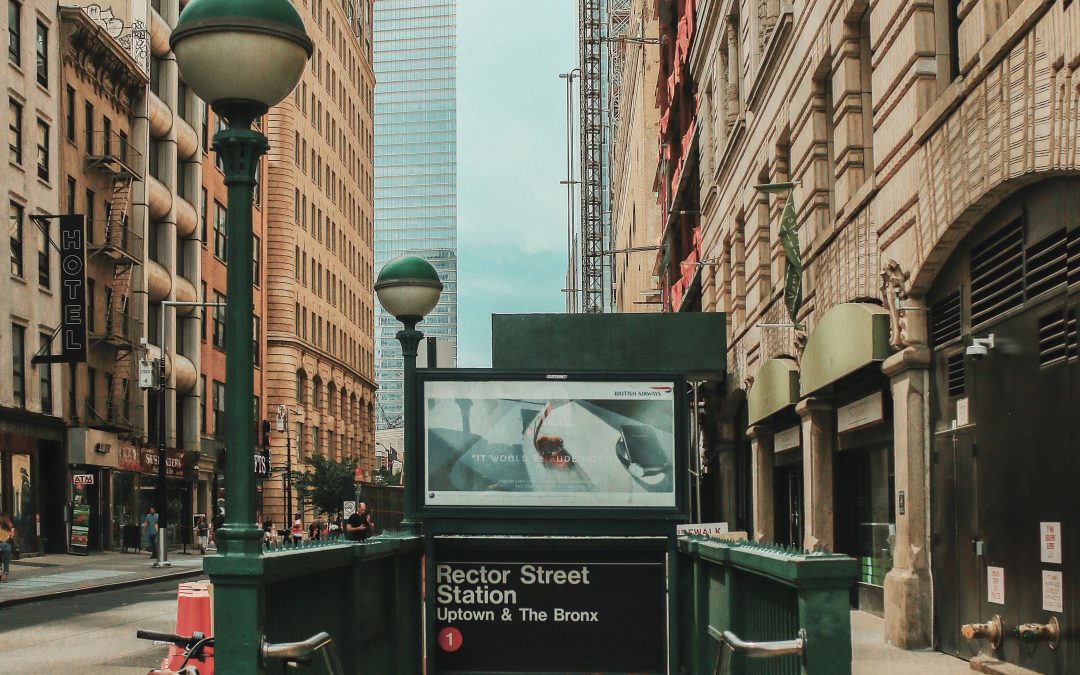
by BCB Property Management | May 1, 2017 | Neighborhoods, New York City, Real Estate
New York City is a beautiful, historic city with some of the most lovely and desirable neighborhoods in the country. But the Big Apple also has a ghost problem. In the always-desirable New York housing market, behavior at each end of the economic spectrum illustrates why New Yorkers looking for a place to live can face considerable difficulties.
First up: Ghost apartments. Not literally haunted, ghost apartments are units that are owned by a wealthy person (or a shell company) that, for the most part, remain unoccupied.
Why is this a concern? There are multiple reasons but, primarily, it’s the hidden costs associated with the empty apartments that contribute to the overall housing challenges in New York. Starting with the most obvious impact—there’s no one living in the apartment. That means that a costly piece of real estate has been purchased or rented, but no money is flowing into the economy on that street. If no one lives in the apartment, there is no one shopping at the corner store, eating out, joining the neighborhood gym or even grabbing the occasional cup of coffee.
The math is pretty simple. Fewer housing units mean fewer people, less foot traffic, and not as much need for local goods and services.
There’s a second major impact on the housing economy when wealthier residents rent an apartment, rather than purchasing a single-family home—taxes. Single-family homes in New York are taxed at a higher rate and produce more tax revenue than a single rental unit generates.
Finally, there’s the cost to the average New Yorker—time. When “ghost apartments” become common, residents may move further away from their place of employment, or areas that are familiar socially. Walking is replaced by long commutes, and employers have less ability to hire hyper-locally.
So, what’s an average New Yorker to do?
Some choose to go off the books and become ghost tenants, another not-so-supernatural phenomenon. Ghost tenants are people (adults) living in an apartment without being on the lease, or having any formal status as a tenant. According to a 2016 article in Slate, which focuses on public housing, “Although 400,000 people officially live in New York City’s traditional public housing units, it’s estimated that as many as 100,000 to 200,000 more reside there secretly.”
The market rate for a one-bedroom apartment in New York, in 2015, was $3,100. In the Slate article, the Ghost Tenant “Gigi” was sharing a mid-town apartment, with her parents, in a public housing project that rented for under $1,000.
If “caught” the whole family can be evicted from public housing. In both public and privately owned buildings, more tenants mean more wear-and-tear on facilities which can lead to hazardous or unpleasant living conditions. At best, the rent will increase based on the income that’s brought to the household by the ghost tenant, which is hardly helpful in reversing the problem.
Then there are communication and safety concerns. If a ghost tenant has a P.O. box and no official street address, they are harder to find, by, say, a school or employer, if needed. If there’s a problem in the building—a gas leak, a fire–emergency responders won’t know to look for the ghost tenant.
When it comes to real estate, it’s best kept balanced and affordable when the appropriate amount of tenants live in an apartment, and when the owners of said apartments actually live there. But eradicating these ghosts is easier said than done, and productive solutions remain few and far between.
It’s clear that ghost apartments and ghost tenants are part of the New York real estate landscape, and one the Ghost Busters can’t solve. These issues, present on both ends of the economic spectrum, must be addressed by developers focusing on building, refurbishing, and maintaining housing units that are affordable by the average New Yorker who lives in the wonderful city so many call home.

by BCB Property Management | Apr 10, 2017 | Brooklyn, Neighborhoods, New York City
New York is finally starting to thaw out from a nasty, wet, snowy winter. The days of warm afternoons and late sunsets are upon us again, and that means that plenty of fun happenings are taking place, whatever you’re into. Here are some exciting events where you can best take advantage of the turn of the season.
Governor’s Ball Music Festival
For the young and the young at heart, there’s nothing like an outdoor music festival to make the best of the warm weather. This year’s Governor’s Ball (June 2-4) boasts a star-studded lineup with headliners including the red-hot Chance the Rapper, perennial indie favorites Phoenix, and the return of 90s rock legends Tool to the NYC area after 11 years. Not to mention an undercard of over 60 bands representing every genre from dance-pop to experimental hip-hop, rock and soul. Single-day tickets are available too if you don’t feel like making a weekend of it.
Hanami Cherry Blossom Festival
Long a favorite destination for Brooklynites, the Brooklyn Botanic Garden pulls out all the stops at their yearly Sakura Matsuri Cherry Blossom Festival (April 29-30). The stunning cherry blossoms promise to be in full glorious bloom while you stroll through the picturesque grounds taking it all in. The Festival also includes several exhibitions of historic Japanese culture including Taiko drummers, samurai sword displays, a Japanese tea room, and art gallery. There’s also a flea market so you can take a little bit of the celebration home with you.
Affordable Art Fair
Whether you want to pick up something to class up your apartment or just enjoy the scenery, the Affordable Art Fair (March 29-April 2) has something you’ll enjoy. Over 70 artists from Buenos Aires to Tokyo will be there to exhibit their works, with prices a touch cheaper than the usual art-world fare. Even if you’re not the type to drop more than $100 on some museum-quality artwork, feel free to grab a cocktail and take a stroll through the gallery. At $18 a ticket, it’s cheaper than a trip to MoMA. Workshops for kids are also available, so feel free to bring the whole family.
Five Boro Craft Beer Fest
The NYC craft beer scene is one of the most robust in the country, and the vendors at the Five Boro Craft Beer Fest (May 12) will be more than happy to show you why. Beer mavens from local breweries ranging from the renowned Brooklyn Brewery to up and comers like Long Island City’s Big Alice Brewing will be at the Bushwick fest to meet and greet and, most importantly, imbibe. All-you-can-drink 2 ounce tastings, a home brew contest, and live music make this an event no beer lover will be willing to skip.
NYC Taste of the Nation
If you’re looking to give back a little while you enjoy yourself, you can indulge while helping a great cause at NYC Taste of the Nation (April 24). Benefitting No Kid Hungry, a national charity devoted to ending childhood hunger, this festival brings together over 50 chefs and bartenders to curate a wide-ranging culinary experience. Sample different dishes as well as unique attractions like the Candy Carnival and Donut Derby. You won’t leave hungry, and your ticket will help ensure that kids around the city won’t be, either.

by BCB Property Management | Apr 10, 2017 | Neighborhoods, New York City, Real Estate
Some real estate professionals say there’s no doubt north is the way to go.
With only Manhattan separating them, is it time for the Bronx to admit that it has more in common with Brooklyn than previously thought?
According to some real estate professionals, the answer is a resounding yes. Even if the idea of the Bronx being a great place to live or invest raises eyebrows from hipsters to former-hippies now comfortable in their Manhattan apartments.
Consider this bit of history. When the Sex and the City character, Miranda, announced she was moving to Brooklyn the idea was so abhorrent to Manhattanites that the New York Post ran an article listing all the (real-life!) hip spots that Carrie and Miranda could frequent.
Now, only a decade later, Brooklyn’s average rent for a one-bedroom apartment runs between $1,600 and $2,900, depending on the neighborhood. It costs about $790,000 on average to buy a home, and well into the millions in trendier neighborhoods.
What’s a dedicated middle-class New Yorker to do?
Manhattan? Probably not with rents running $3,000 and buying about a $2 million endeavor.
It may be time to head north.
First, there’s the basic premise that Brooklyn prices are continuing to go up, so the Bronx is a more affordable option given the average rent of $1,200/month.
But consider the other benefits of the Bronx, like great transportation. The subway and other public transportation options are excellent—and traveling from midtown to the south Bronx is a fairly short commute.
For example, it’s only a 24-minute subway ride from Radio City Music Hall to Yankee Stadium. The residential areas just north of the stadium are considered up-and-coming, and affordable, according to multiple sources.
If driving is a must, it’s actually possible in the Bronx. I-87 along the west side of the borough is far easier to navigate than, say, the lower east side or Time’s Square.
For the more green-minded commuters, the recent opening of the historic High Bridge (New York’s oldest standing bridge, originally used to transport water from the Croton River to New York) offers a quick, convenient pedestrian and bicycle route from Highbridge to Upper Manhattan.
Not only are the rents in the neighborhood still reasonable, but the apartments are often in renovated historic buildings, originally constructed in the 1920s and 1930s.
For even more gorgeous, historic, architecture the buildings along the 5-mile stretch of the Grand Concourse are an excellent option. While this area, originally inspired in the early 1900s by the Champs-Elysees in Paris, fell into considerable disrepair in the 1970s and ‘80s, an $18 million restoration and landscaping initiative in 2008 revitalized the neighborhood.
Further north still is Fordham Heights, which is flanked by both the Bronx Zoo and the New York Botanical Garden, and much more affordable than the real estate near Central Park.
Continuing north (no worries, not Niagra Falls!) recent re-zoning along Webster Avenue has created spaces now open to residential development that is working and middle-class friendly.
While these areas are not all a short commute to the culture and delights of Manhattan, they are still within close enough proximity (about an hour on public transportation) for trips into the city, business meetings, or even daily commutes.
Plus, culture and great food is already a part of the Bronx! In addition to the Zoo and the Garden, multiple colleges and universities offer music, dance and theatrical events.
The food scene? Solid—and growing.
Many New Yorkers believe that the Bronx is home to “real” Little Italy. Practically disdainful of catering to tourists, Arthur Avenue in the Belmont Neighborhood is still lined with Italian shops, markets and restaurants that have been there since Italian immigrants settled the neighborhood in the 1950s.
For the real “foodies” of New York, it’s good to know that there’s a culture of food that’s diverse enough to bring Anthony Bourdain to the Bronx.
In 2014, CNN aired a Bronx episode of Bourdain’s show “Parts Unknown.” Bourdain sampled Arthur Avenue’s Italian offerings, but dove whole-heartedly into Puerto Rican, African and Caribbean dishes.
“If the Bronx were a neighborhood in Manhattan, sort of shrunk down, you’d have hipsters crawling all over this place.” Bourdain quipped.
Affordable, easily accessible by public transportation, and with vibrant neighborhoods and ethnic diversity–in a New York minute the Bronx may beat Brooklyn as the place to live.

by BCB Property Management | Mar 13, 2017 | Uncategorized
Will the tech startup Opendoor end the need for open houses, or is it just the latest upstart?
Anyone who’s considered buying or selling a house this millennium is familiar with Zillow, the online real estate database that’s been around for about ten years.
Much less familiar is Opendoor, a startup that launched about two years ago and, if the model works, promises to change the way homes are bought and sold nationwide.
Opendoor is a company that purchases houses (sight unseen except for one inspection) for a flat price determined by a complex algorithm. The company pays cash and the seller is quickly able to move on with their life—literally.
The exchange happens entirely electronically, except for the inspection to verify the seller-provided information.
Currently, Opendoor operates in two markets: Phoenix, Ariz. and Dallas, Texas. The company only deals in single-family homes, valued between $125,000 and $500,000, that were built after 1960. No fixer-uppers, “has potential” or luxury properties are allowed.
How, exactly, does Opendoor work?
Eric Wu, the 34-year-old cofounder of Opendoor, says that he wants to lessen the pain of moving for both sellers and buyers. To that end he put together a team that built a platform to streamline the process for both sides.
For sellers, that means first contacting Opendoor via their website and providing details about the house to be sold. Opendoor then makes an offer, if interested. If the offer is accepted (and the company aims to make accurate and competitive offers) then an inspection is scheduled.
Sellers then have a 60-day window for a closing date. On the closing date, which is set by the seller, the seller is paid and Opendoor (which handles all the “paperwork” details) owns the home.
For buyers, the process is a big step up from viewing property listings online. In addition to being able to check out the available homes, buyers can be connected to financing options. Another bonus: the ability to tour the home anytime between 6AM and 9PM, daily.
Remember, the houses are empty. Want to schedule a visit on the run? Opendoor’s got an app for that. Offers can be made electronically and reviewed quickly. On top of it, they even have a 30-day, money back guarantee.
The Good, the Bad and the Unknown
The model certainly has financial potential, according to the founders and their investors. Forbes called it one of the next “Billion-Dollar Start-Ups” because it taps into “a market with $1.4 trillion in annual transaction volume that’s been largely undisturbed for decades.”
Opendoor makes money by charging an (on average) 8 percent transaction fee to sellers. That’s obviously good for Opendoor, and the ease of selling is certainly good for the sellers.
But, there’s a downside. Opendoor is faced with the task of turning properties over, just like any real estate agent. Sitting on properties, or selling houses for less than the purchase price, isn’t going to turn a profit for the company.
Then there are the parameters, geographically and otherwise, of the model. Mid-sized markets, with new construction, like Phoenix and Las Vegas (where Opendoor is heading next) might work—but what about more established cities, like Boston, Mass.? Buyers in Boston like historic properties.
Buying into even larger markets, like New York, would also seem to be a non-starter. In 2015 the average price of a single-family home in Manhattan was $1.87 million. Of course, there’s always Queens where the average price was only $452,304.
Finally, while there is certainly a business and financial transaction happening, purchasing a home is an emotional decision as well. An “old fashioned” realtor knows this and can help guide buyers along the ups and downs of the journey.
So far, that’s something no online platform, even Opendoor, can realistically offer.

by BCB Property Management | Mar 9, 2017 | Neighborhoods, New York City
Digitally savvy equals success for trucks and foodies alike.
Hot dogs, pupusas, kebabs, bamboo rice sticky bowls, fried chicken, falafel, bulgogi, and tacos made from any and all of the above. That’s “Food Truck Food,” New York City style. Every type of ethnic, fusion and fabulous food, prepared fresh daily, in food trucks on every block and in every borough.
Officially there are 4,235 food vendors in New York City, but unofficial estimates (which include non-permitted vendors, as well as rented and black market licenses) are at least double that number.
Entrepreneurial, fun, and, with a rapidly growing market, food trucks are beyond popular. But, it’s also a competitive market so it takes more than wonderful waffles, like the Belgian awesomeness of Wafels & Dinges, to keep customers coming back and to turn a profit.
It takes technology—starting with the right dongle.
No, a dongle isn’t a type of donut fusion with some exotic glaze. It’s the small credit card reader that attaches to phones, tablets and laptops so people can pay using a card.
Square has been the popular choice for this task since at least 2011, according to an article in Mashable. It, and digital tools like it, “make running a mobile business much easier and more efficient, since you don’t have to waste time counting cash or getting change from the bank.”
Square also has services to track sales, set up price lists (including specials!) and manage inventory. Square charges, on average, about 2.75 to 3.5 percent of the sale which makes them affordable on a lean budget. Other, similar, merchant vendor devices and services are offered by PayPal.
Once a food truck has the ability to accept payment in all forms, the next step (a daily step!) is to let customers know they’re open and ready for business.
This requires social media, including Twitter and Facebook, as well as membership with a mapping and food truck-tracking website and app.
Why the need to have multiple, facile, platforms and apps?
The most obvious reason: food trucks are mobile. With traffic, construction, protests and parades trucks need to be able to adapt to ever-changing landscape of city—yet still let people know where to find the food.
Social media lets food-truck-fans follow digitally so that following the path of favorite trucks literally is easier. Also, in order to make ends meet many trucks offer catering and delivery—usually via-online-ordering.
That’s where joining up with a site like RoamingHunger really comes into play. The company has been around since 2009 and has maps of multiple cities where all the best food trucks are listed, mapped (with time as well as place!) and tracked.
Based on the site’s list of popular trucks, including Korilla BBQ which won the Rookie of the Year Vendy in 2011 and is still going strong, connecting to a website like RoamingHunger is mandatory for mobile eateries. It effectively gets the word out and brings customers in.
For those on the other side of the counter, the food-truck-foodies, technology makes finding new options and old favorites easy. In addition to RoamingHunger, FoodTrucksIn offer location and contact information for food trucks (if the truck has “checked in”) as well as a sort feature for hungry foodies to look for the exact type of food in which they’re interested.
Of course, for calorie-free enjoyment there’s always Pinterest and Instagram. Many food truck vendors use these sites to highlight their really “wow” menu items.
Though you may still be uncertain which food trucks to visit for lunch as the weather gets warmer, one thing is for sure: food trucks and technology may both be mobile, but as a pairing they aren’t going anywhere.





